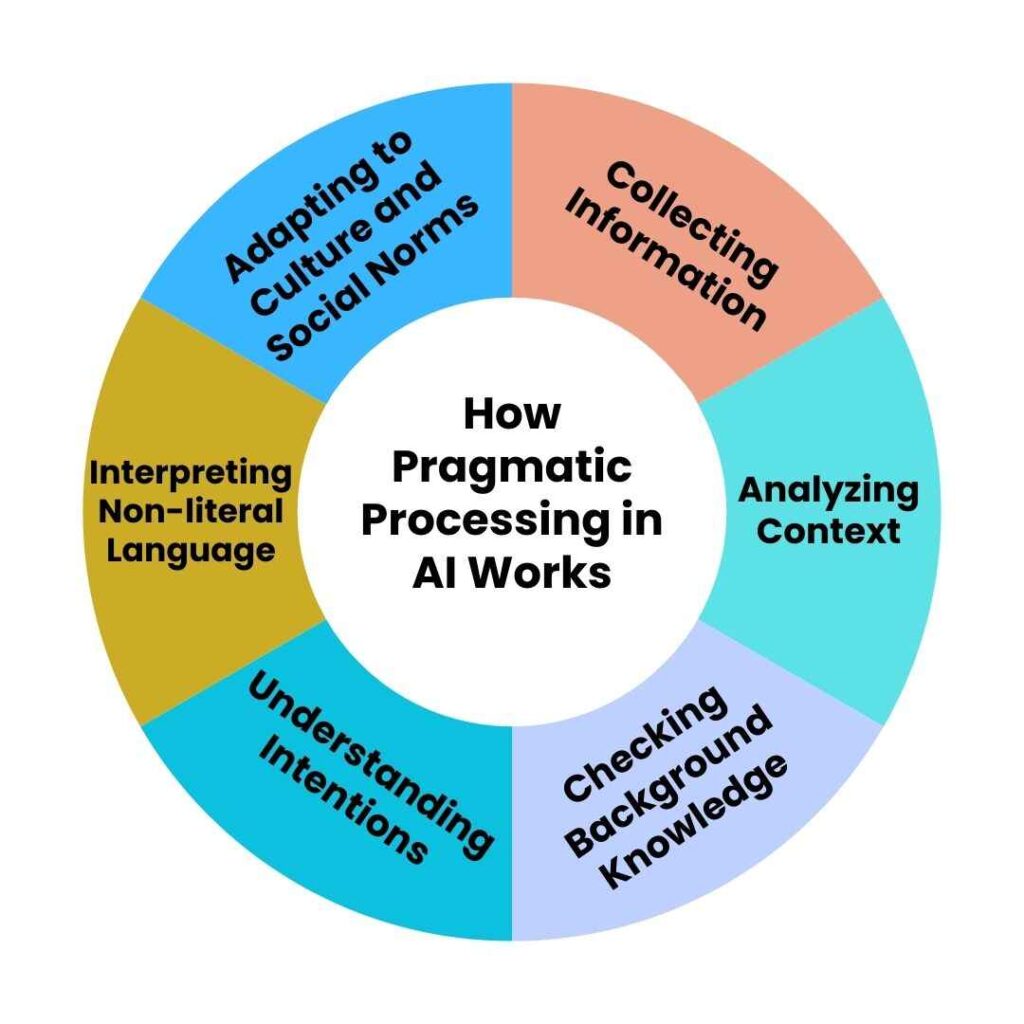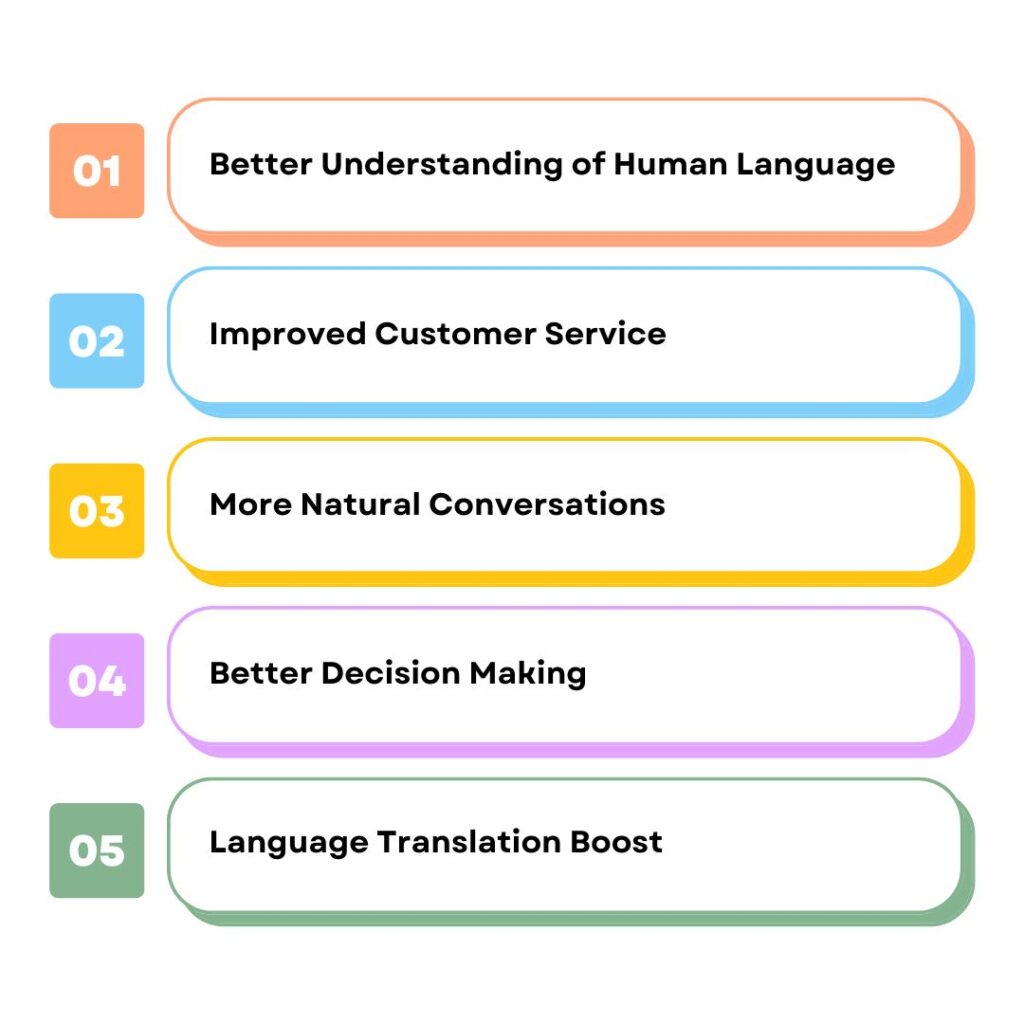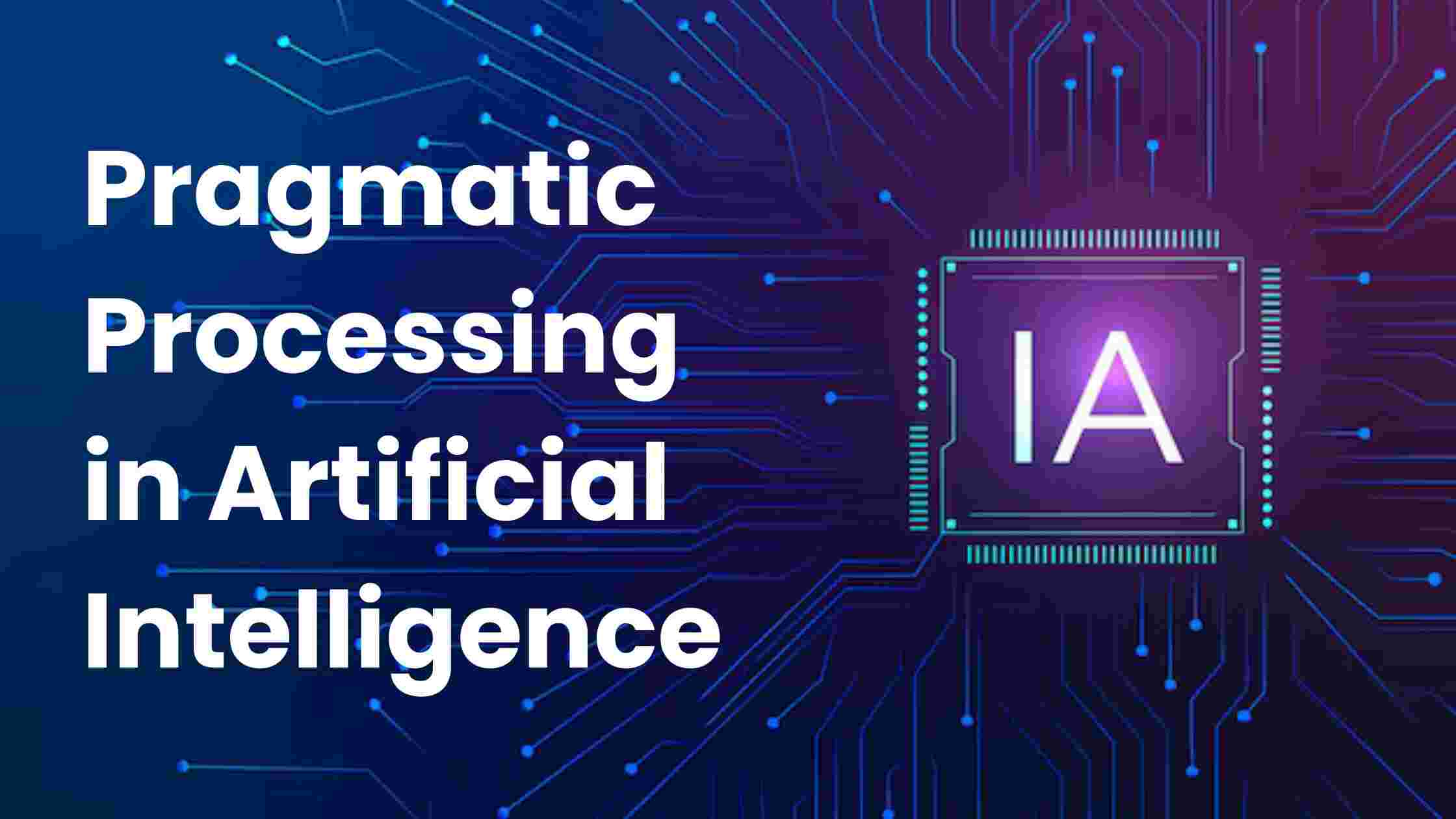Have you ever wondered how AI understands what we mean, not just what we say? That’s where Pragmatic Processing in AI comes in. It’s like teaching computers to read between the lines, just like humans do.
Pragmatic processing in AI helps machines understand the context and intent behind language, not just the literal meaning.
This blog post will explain what Pragmatic Processing in Artificial Intelligence is all about. We’ll explore how it helps machines understand context and why it’s so important for making AI smarter.
Table of Contents
- What is Pragmatic Processing in AI
- How Pragmatic Processing in AI Works
- Benefits of Pragmatic Processing in AI
- Real-World Applications
- Challenges in Implementing Pragmatic Processing
- The Future of Pragmatic Processing in AI
- Conclusion
What is Pragmatic Processing in AI

Pragmatic Processing in AI is like teaching computers to understand the full picture of what we’re saying. It’s not just about the words we use, but also about the meaning behind them.
Think of it this way: when you talk to a friend, you both understand jokes, sarcasm, and hints. That’s because you know the context of your conversation. Pragmatic Processing tries to give AI this same ability.
For example, if you say “It’s raining cats and dogs,” a basic AI might get confused. But with Pragmatic Processing, the AI would understand that you mean it’s raining heavily, not that actual cats and dogs are falling from the sky!
This technology helps AI to:
- Understand context
- Figure out the speaker’s intentions
- Interpret non-literal language
By using Pragmatic Processing, AI can become much better at understanding and communicating with humans. It’s a big step towards making machines that can truly get what we mean, not just what we say.
How Pragmatic Processing in AI Works

Pragmatic Processing in AI works by teaching computers to look at more than just words. It’s like giving AI a set of tools to understand the bigger picture. Here’s how it works:
1. Collecting Information
The AI gathers all the details it can. This includes the words used, who’s speaking, and what’s happening around the conversation.
2. Analyzing Context
The AI looks at the situation. Is it a casual chat or a formal meeting? This helps it understand the tone and style of the conversation.
3. Checking Background Knowledge
The AI uses what it knows about the world to make sense of things. For example, it is known that “break a leg” can mean “good luck” in theater.
4. Understanding Intentions
The AI tries to figure out why someone is saying something. Are they asking for help, making a joke, or giving an order?
5. Interpreting Non-literal Language
The AI learns to spot things like sarcasm, metaphors, and idioms. It then figures out what they really mean.
6. Adapting to Culture and Social Norms
The AI considers cultural differences and social rules that might affect the meaning of what’s said.
By using these steps, Pragmatic Processing helps AI understand language more like humans do. It’s not perfect yet, but it’s getting better all the time!
Benefits of Pragmatic Processing in AI

Pragmatic Processing in AI comes with many advantages. Let’s look at some of the key benefits that make it so important:
Benefit 1: Better Understanding of Human Language
Pragmatic Processing helps AI understand us better. It’s like giving AI a superpower to grasp the real meaning behind our words. This means:
- AI can understand jokes and sarcasm
- It can figure out what we want, even if we don’t say it directly
- AI can handle tricky situations where words have multiple meanings
Benefit 2: Improved Customer Service
For businesses, this technology is a game-changer. Here’s how:
- Chatbots can give more accurate and helpful responses
- Virtual assistants can understand complex requests
- Customer support systems can solve problems faster
Benefit 3: More Natural Conversations
Talking to AI becomes more like talking to a person. This leads to:
- Less frustration when using AI-powered devices
- More enjoyable interactions with virtual assistants
- Easier communication for people who aren’t tech-savvy
Benefit 4: Better Decision Making
AI with Pragmatic Processing can:
- Understand the context of data and make smarter choices
- Spot trends and patterns that aren’t obvious at first glance
- Help in complex fields like healthcare and finance by understanding nuanced information
Benefit 5: Language Translation Boost
This technology also helps in breaking language barriers:
- Translations become more accurate and natural-sounding
- AI can understand and translate idioms and cultural references
- It helps preserve the tone and intent of the original message
By bringing these benefits, Pragmatic Processing in AI is making machines smarter and more helpful in our daily lives. It’s bridging the gap between how humans and computers understand language, leading to better AI tools for everyone.
Real-World Applications
Pragmatic Processing in AI isn’t just a cool idea – it’s already making a difference in many areas of our lives. Let’s look at some real-world examples:
Smart Home Assistants
Devices like Amazon Alexa and Google Home use this technology to:
- Understand complex commands
- Respond more naturally to questions
- Handle follow-up questions without repeating information
Customer Service Chatbots
Many companies use AI-powered chatbots that:
- Understand customer problems better
- Provide more accurate and helpful answers
- Handle a wider range of customer queries
Language Translation Apps
Apps like Google Translate are getting smarter with Pragmatic Processing:
- They can translate idioms and phrases more accurately
- They maintain the tone and intent of the original message
- They handle context-dependent words better
Social Media Analysis
Companies use AI to understand social media posts:
- It can detect sarcasm and jokes in posts
- It helps companies understand customer feelings better
- It can spot trends and issues faster
Healthcare
In the healthcare field, this technology helps by:
- Understanding patient descriptions of symptoms more accurately
- Assisting doctors in interpreting complex medical data
- Improving communication between patients and healthcare providers
Education
AI in education is making learning more interactive:
- It can understand and respond to student questions more effectively
- It helps create personalized learning experiences
- It can grade written answers more accurately, understanding context and meaning
These examples show how Pragmatic Processing in AI is making machines smarter and more helpful in many areas of our lives. As the technology improves, we can expect to see even more exciting applications in the future!
Challenges in Implementing Pragmatic Processing
Implementing Pragmatic Processing in AI isn’t easy. One big challenge is the complexity of human language, with its idioms and cultural references.
Teaching machines to understand context is also tough, as meaning often depends on the situation and tone.
Language ambiguity is another hurdle. Words can have multiple meanings, and AI must learn to choose the right one.
Cultural differences add complexity too, as what’s appropriate in one culture may not be in another.
Keeping up with evolving language is also challenging. New words and meanings emerge constantly, requiring regular AI updates.
Despite these obstacles, researchers continue to make progress, bringing us closer to more natural AI interactions.
The Future of Pragmatic Processing in AI
As AI continues to evolve, Pragmatic Processing will play a crucial role in making machines more human-like in their understanding.
We can expect to see AI that’s better at grasping context, emotion, and subtle meanings in our communication.
This technology could lead to more natural-sounding virtual assistants, smarter chatbots, and AI that can engage in complex conversations.
In fields like healthcare and education, it might enable more personalized and effective AI-driven solutions.
While challenges remain, ongoing research and advancements in machine learning promise exciting developments.
The future of Pragmatic Processing in AI looks bright, potentially transforming how we interact with technology in our daily lives.
Conclusion
In conclusion, Pragmatic Processing in AI is changing how machines understand us. It helps AI grasp the context, making our interactions with technology more natural and useful. As this field grows, we can look forward to smarter AI that truly gets what we mean. While challenges exist, the future is exciting. Pragmatic Processing in AI is paving the way for more helpful, understanding, and human-like artificial intelligence in our everyday lives.

